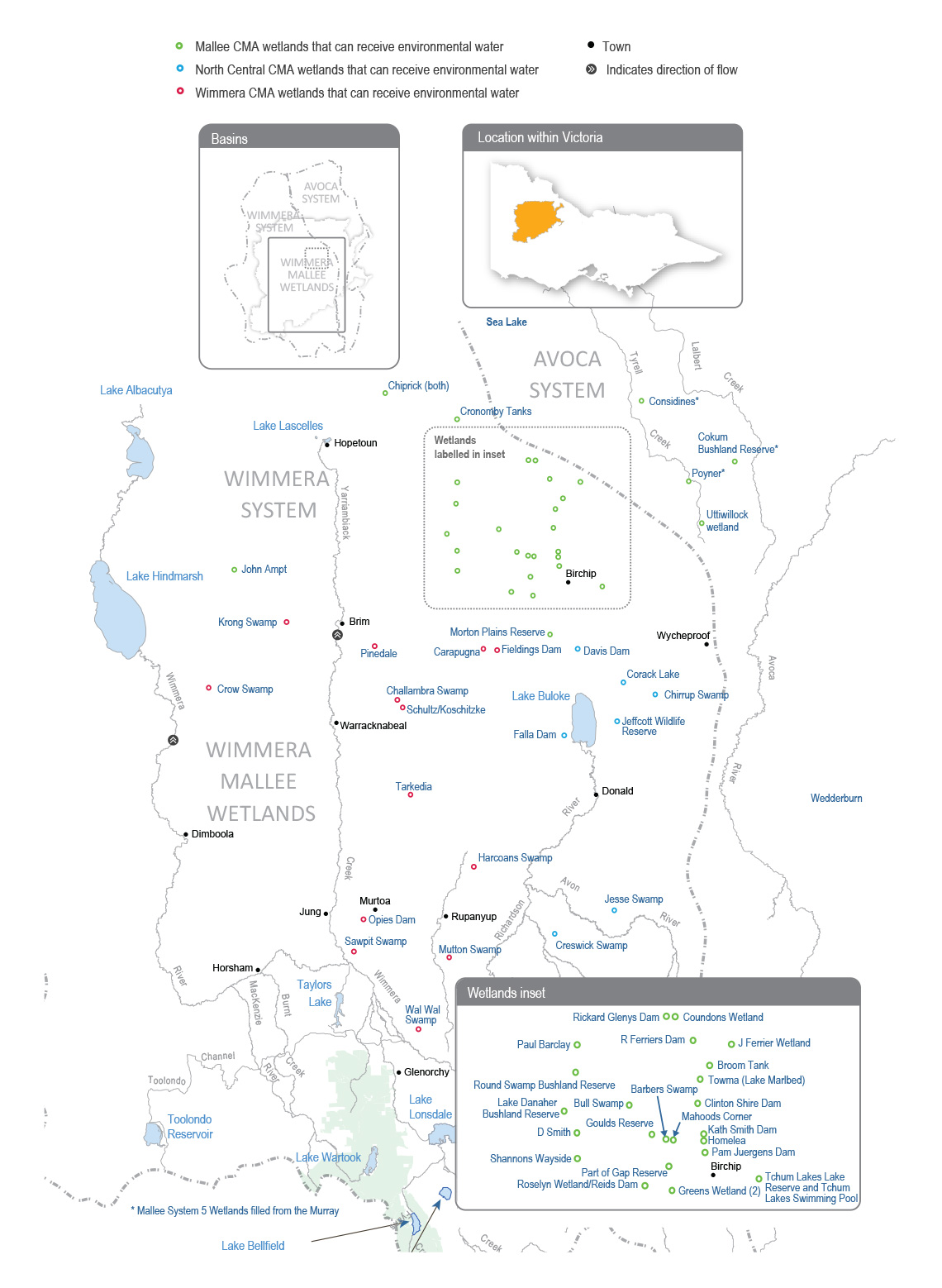Traditional Owner cultural values and uses
Spanning a broad geographic area, several Wimmera-Mallee wetlands show indications of the longstanding cultural heritage and importance of these sites to the Traditional Owners of the region, including but not limited to Barapa Barapa Traditional Owners and other Traditional Owner groups represented by the Barengi Gadjin Land Council and the Dja Dja Wurrung Clans Aboriginal Corporation (trading as Djaara). Some sites have artefacts and scar trees recorded in or adjacent to them, and further cultural surveys could better inform the management of water for the environment at those sites.
The Barengi Gadjin Land Council is the Registered Aboriginal Party for a significant land area of the Wimmera-Mallee wetlands. The Barengi Gadjin Land Council represents the Wotjobaluk, Jaadwa, Jadawadjali, Wergaia and Jupagalk peoples.
In recent years, the Barengi Gadjin Land Council Aboriginal Water Officers and the Wimmera CMA have undertaken monitoring at Sawpit Swamp Wildlife Reserve, Wal Wal Swamp Wildlife Reserve, Carapugna (Watchem Bushland Reserve) and Mutton Swamp Wildlife Reserve, helping to understand environmental flow deliveries and values at the sites.
The Barengi Gadjin Land Council and the North Central CMA have discussed opportunities for projects that facilitate reconnection with and healing of Country. Recent meetings have highlighted several areas where collaboration is possible including on-Country events and revegetation projects. In May 2022, the Barengi Gadjin Land Council and the North Central CMA undertook a cultural values assessment at Creswick Swamp. Cultural values identified at the site include river red gums and eastern grey kangaroos. Environmental water management at Creswick Swamp supports a local population of eastern grey kangaroos. Prints left in the mud nearby suggest regular visitation.
The Barengi Gadjin Land Council has discussed the significance of the wetlands and their aspiration to undertake work at these sites in future and provided the following statement to the Mallee CMA when discussing environmental watering:
“The Wimmera-Mallee is living cultural landscape and there is a lack of recorded data regarding the cultural values over many sections of the Wimmera-Mallee Pipeline. Several highly significant places are outlined through our Country Plan, but like all places across our Country, the rivers, creeks, lakes, wetlands and swamps, and all other landscape features in this area are of high cultural significance. We wish to care for Country again through our traditional land management practices and revive and share the ancient narrative of this area. Mapping the cultural values of places along the Wimmera-Mallee Pipeline will be essential in contributing to integrated catchment management.
“We are unable to identify places of particular cultural values and uses confidently until Aboriginal Water Assessment/ Cultural Heritage Surveys are systematically undertaken across Wimmera-Mallee Pipeline sites. All the swamps, wetlands and soaks of this area are of high cultural significance as they are linked to Traditional trading routes that extend in all directions. It is essential that all of these places are managed correctly and water quality and biodiversity are improved.”
Social, recreational and economic values and uses
In planning the potential environmental watering actions in Table 4.4.1, the Mallee, North Central and Wimmera CMAs considered how environmental flows could support values and uses, including:
- water-based recreation (such as fishing, swimming and yabbying)
- riverside recreation and amenity (such as birdwatching, duck and quail hunting, photography, camping, picnicking and walking)
- community events and tourism (such as orienteering and citizen science, including collecting data about bird species and abundance, frog species and microbat recordings)





